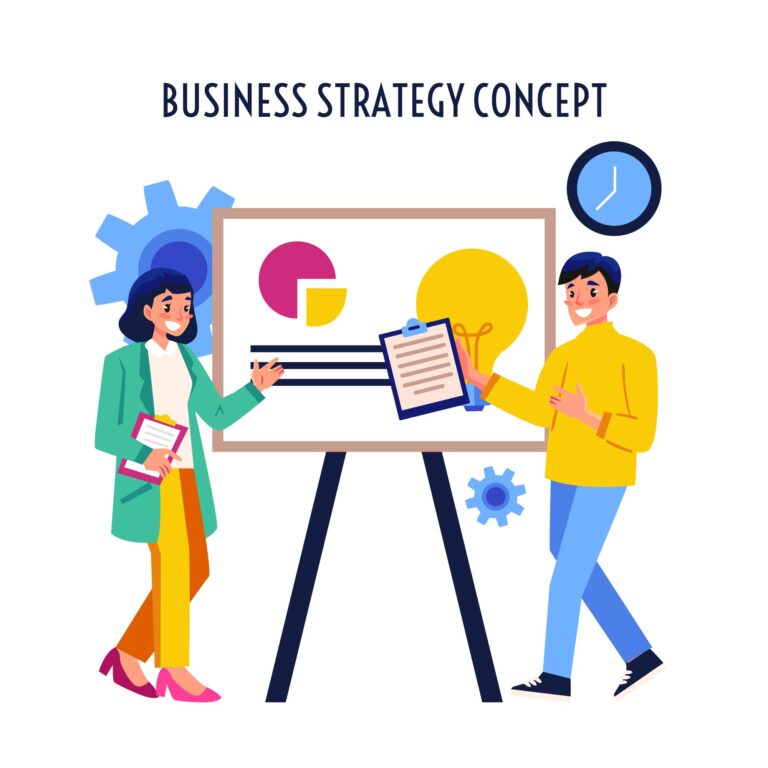
Introduction
Intuit Inc., a leader in financial software solutions, has consistently delivered innovation by focusing on customer-centric product management. Established in 1983, the company is celebrated for its wide array of tools, featuring QuickBooks, TurboTax, Mint, Credit Karma, and Mailchimp. Intuit Product management approach, shaped by its commitment to design thinking and AI-driven solutions, sets an industry standard for effective product lifecycle management (PLC).
Best Product Strategy: A Customer-First Approach
Top Product strategy focuses on delivering intuitive financial solutions tailored to its global audience. The strategy hinges on three core pillars:
- AI-Driven Solutions: By integrating artificial intelligence, Intuit enhances the user experience across its range, streamlining tasks in platforms like QuickBooks and TurboTax.
- Customer-Centric Development: Continuous customer feedback is at the heart of Intuit’s product lifecycle. By listening closely to user needs, Intuit ensures each product iteration provides real value to its diverse customer base.
- Collaborative Product Management: Intuit empowers its managers to take full ownership of their strategies, working closely with cross-functional teams. This collaborative environment facilitates seamless communication between managers, developers, and designers, ensuring cohesive development.
Data-Driven Decisions
One of the key drivers of Intuit’s success is its data-centric decision-making approach. Leveraging analytics, the company measures performance, customer satisfaction, and continuously improves its offerings. This emphasis on data enables Intuit to refine its roadmap, ensuring it meets evolving customer needs.
Product Life Cycle Management at Intuit
Intuit’s approach to lifecycle management ensures sustained product performance and innovation. Every stage of the product life cycle is thoughtfully managed to meet customer expectations and respond to market trends. The stages include:
- Introduction: Before launching a product, Intuit conducts thorough market research and user testing. This phase focuses on building awareness and ensuring product-market fit.
- Growth: During the growth stage, Intuit amplifies its marketing efforts and continuously gathers customer feedback to fine-tune the product. This phase is critical for gaining market share.
- Maturity: When a product reaches a stable stage, Intuit prioritizes enhancing user experience and implementing updates to maintain its relevance and engagement.
- Decline: In this last stage, products may undergo significant updates or be phased out altogether, based on performance data and customer input.
Key Components of Intuit’s PLC Strategy
- Continuous Innovation: Intuit maintains a competitive edge by fostering an innovation pipeline that prioritizes creativity and new solutions. This approach helps the company remain ahead in a rapidly changing industry.
- Customer Feedback Loops: Intuit integrates customer feedback into every phase of the lifecycle. This ensures the company is responsive to user needs and can quickly pivot to address any issues.
- ERP Integration: Intuit’s robust integration with enterprise resource planning (ERP) systems enhances its ability to manage supply chain, CRM, and development functions efficiently.
Design for Delight (D4D): Intuit’s Signature Approach
Intuit’s Design for Delight (D4D) methodology is central to its product development process. This design thinking framework emphasizes three key principles:
- Deep Customer Empathy: Intuit places a strong emphasis on understanding its customers. Product teams immerse themselves in users’ experiences, identifying pain points and opportunities to deliver solutions that truly resonate.
- Go Broad to Go Narrow: During the ideation process, teams initially brainstorm a wide range of ideas; subsequently, they narrow down their options to focus on the most impactful solutions. This ensures the final delivers exceptional value to users.
- Rapid Experimentation: Intuit believes in testing early and often. By conducting rapid experiments with real customers, the company can quickly iterate and improve its products, minimizing the risk of costly errors.
Product Development Through Design Thinking
Intuit’s commitment to design thinking is evident across all levels of the organization. Under former CEO Brad Smith, the company adopted a cultural shift towards customer-centricity and design innovation. This transformation facilitated greater cross-functional collaboration, which, in turn, led to the development of products that are not only functional but also delightful.
The D4D framework has significantly influenced Intuit’s portfolio; as a result, it has led to successful launches such as the SnapTax app, which was developed based on genuine customer insights and, furthermore, offered a highly engaging user experience.
Conclusion
Intuit’s success in lifecycle management and strategy serves as a powerful example of how businesses can leverage design thinking, data analytics, and customer feedback to drive innovation. Through continuous improvement and a commitment to delighting users, Intuit remains a leading force in the financial software industry. Its approach to product management offers valuable lessons for product managers, teams, and leaders seeking to deliver meaningful solutions in today’s dynamic market.